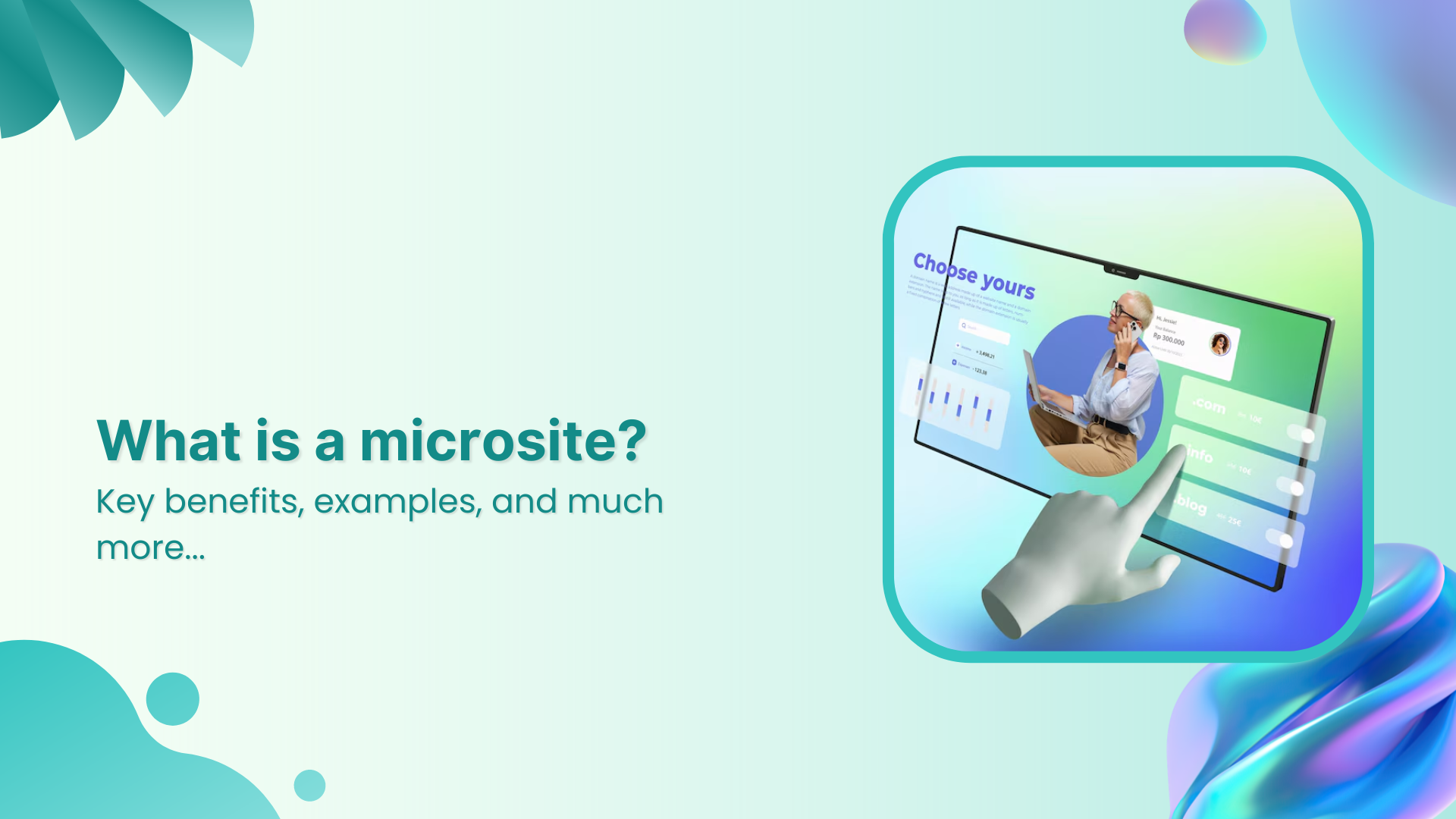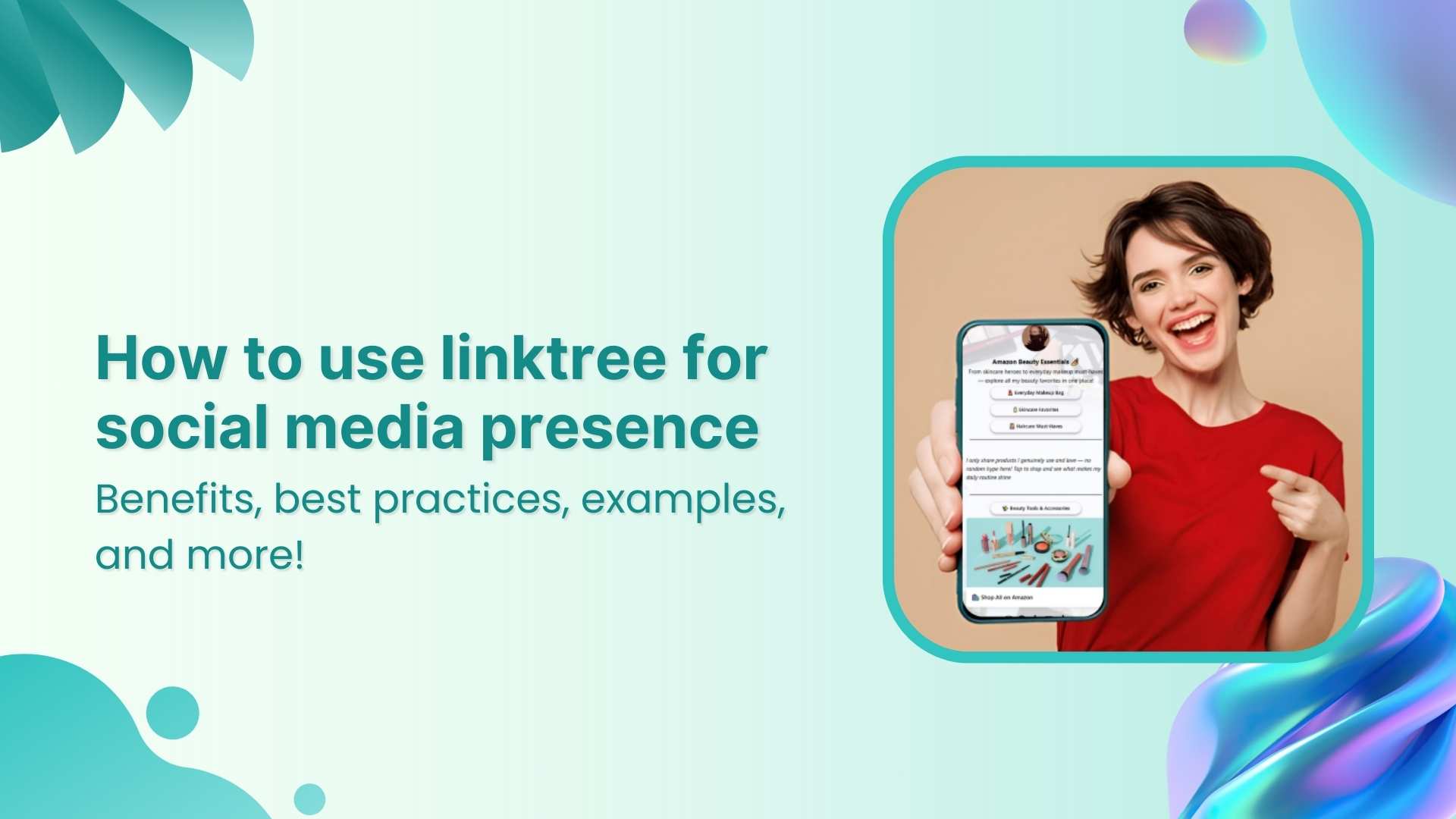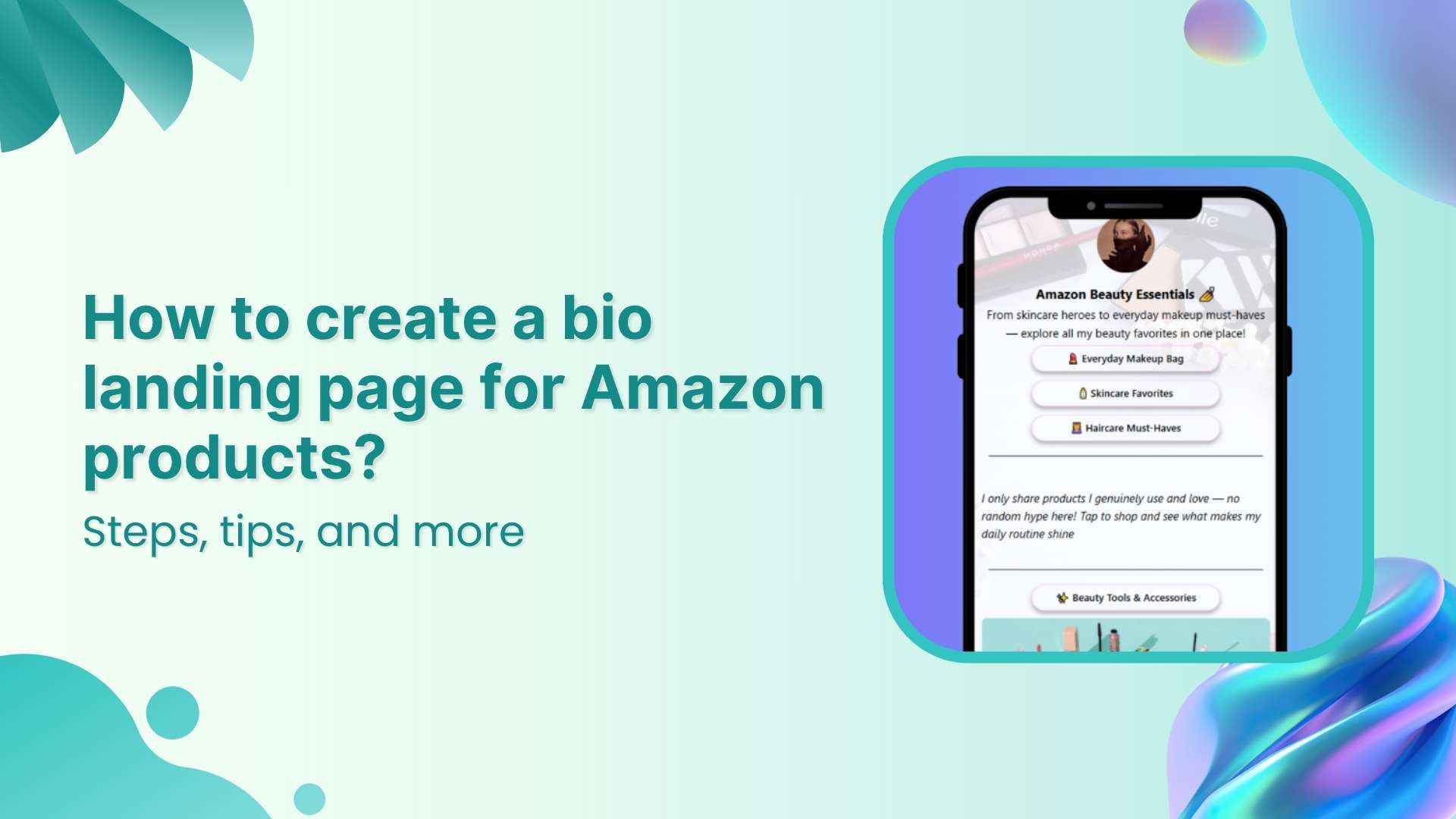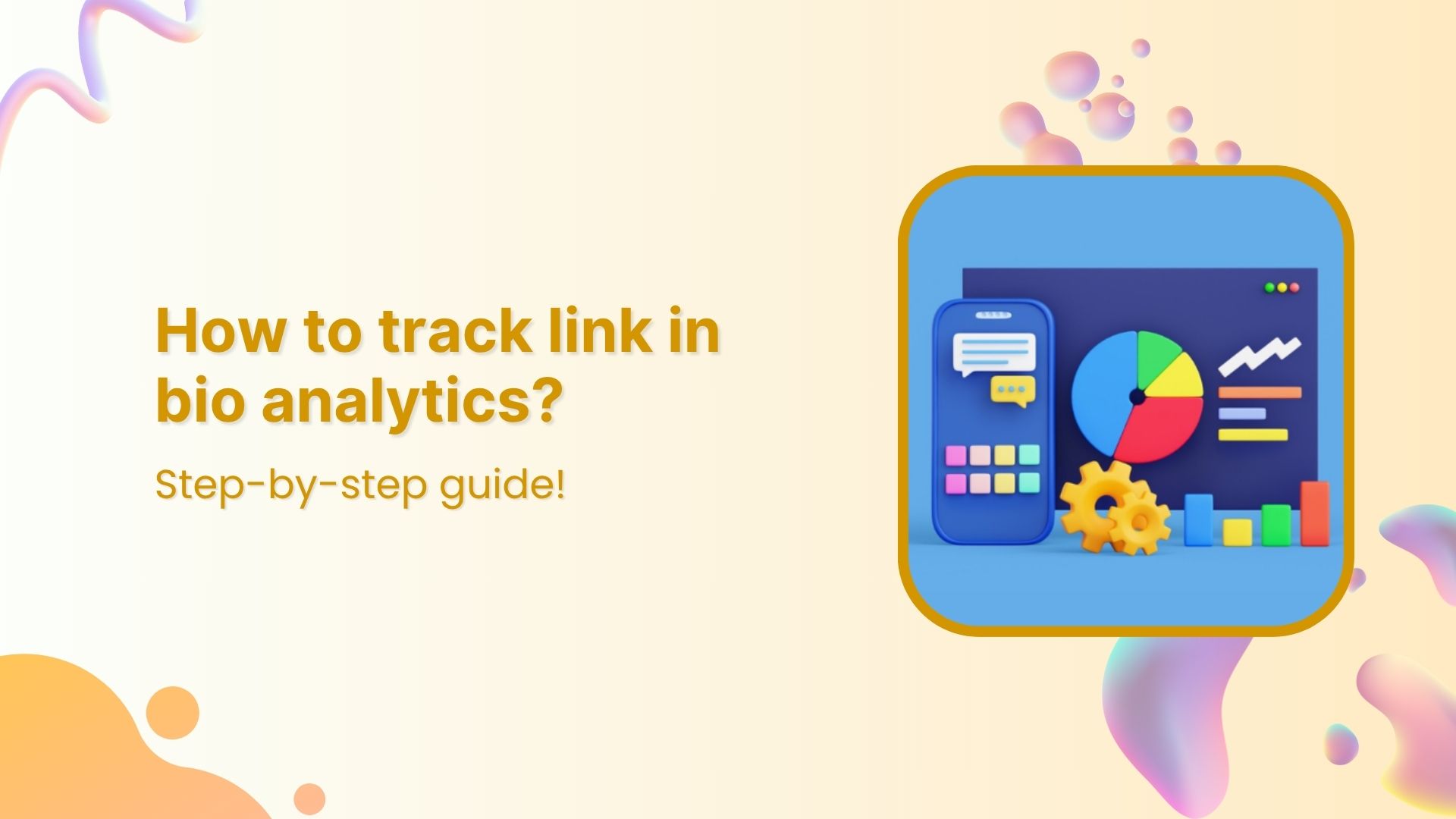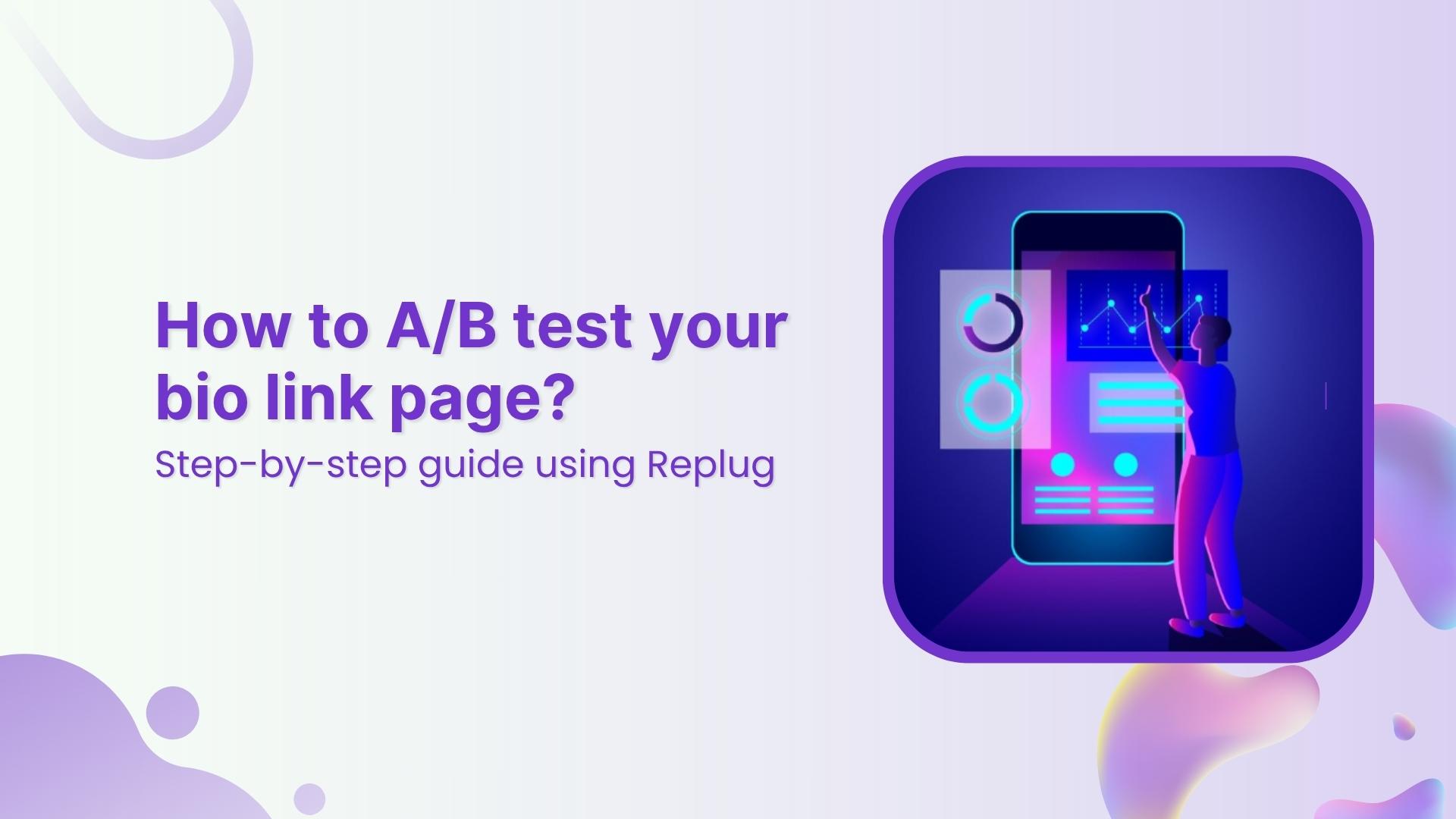Looking for a more focused and impactful way to reach your target audience? Microsites might be the answer!
Don’t know what microsites are?
Worry not! This guide will help you understand and create microsites. Here’s what we’ll cover:
- What are microsites? Learn what they are and their key features.
- Why use them? Find out the benefits for businesses, creators, and organizations.
- How do they differ? Compare microsites with landing pages and regular websites.
- How to build one? Follow the steps to create a microsite from start to finish.
- Other uses: See how microsites can be used in various fields beyond marketing.
Whether you’re an experienced marketer, content creator, or just looking for a new way to engage with your audience, microsites offer a powerful way to achieve your goals. Let’s get you started
Convert your followers into customers with single bio link.
Uplift your conversion rates by connecting all of your social accounts and business pages with a single bio link.
Get Started For Free!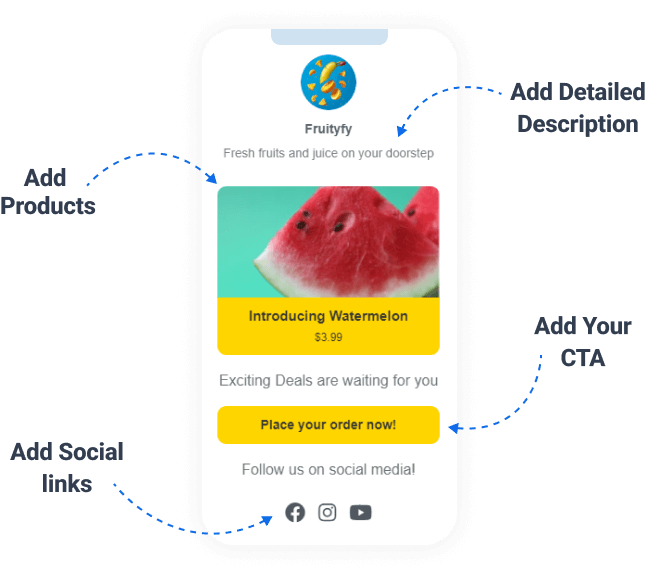
What is a microsite?
A microsite, also known as a link-in-bio page or landing page, functions as a compact, focused website for your agency, brand, or profile. Its primary goal is to highlight a specific product, promote a special event, or effectively run targeted campaigns, drawing attention and engagement.
Can a microsite really enhance your social presence?
In 2024, social media is the main source of sales and conversions for almost every business of every type. In order to stand out, you need something unique such as medium to showcase your brand story, and microsites are one of the best way. A microsite can help by giving you a focused platform to showcase your best content, engage with your audience, and turn followers into loyal customers.
Related: What Does Link In Bio Mean: All You Need To Know
06 key benefits of using microsites
Here are some of the most common benefits of creating a microsite:
- Cost-effective marketing: Unlike developing a full-fledged website, microsites are generally more affordable to create and maintain. This makes them a budget-friendly option for targeted marketing campaigns.
- Campaign flexibility: Do you need to adjust your messaging on the fly? Microsites allow for quick and easy updates, making them ideal for dynamic campaigns or real-time promotions.
- Keep track of important metrics: Advanced microsite tools allow you to track visitor count, bounce rate, time spent on the page, conversion rates, and user engagement. This hands-on approach helps you understand what’s working, make informed adjustments, and continuously improve your microsite for better results.
- Get more creative: Microsites offer a platform to experiment with different content formats like videos, interactive elements, or downloadable resources. This can help gauge user preferences and create more customized content for future.
- Retarget your audience: Utilize retargeting tools to add retargeting pixels to your microsite link. This way, you can track visitors and deliver targeted ads to them across various platforms, keeping your brand top-of-mind and encouraging return visits.
- Improved user experience (UX): By focusing on a single objective, microsites provide a streamlined user experience. Visitors can find the information they need quickly and easily, leading to higher satisfaction.
- Reduced bounce rate: A well-designed microsite keeps users engaged with relevant content, minimizing the chances of them bouncing off to another website. This translates to better campaign performance.
Convert your followers into customers with single bio link.
Uplift your conversion rates by connecting all of your social accounts and business pages with a single bio link.
Get Started For Free!
| Pro tip: Place retargeting pixels on your microsite to reach users who have previously interacted with your brand or page. This allows for highly targeted follow-up ads with personalized offers or reminders to complete unfinished actions (e.g., abandoned shopping carts). |
Microsite vs. websites vs. landing pages
| Feature | Microsite | Website | Landing page |
| Purpose | Focused campaign or product | Comprehensive business overview | Single conversion goal |
| Scope | Limited, standalone | Extensive, multiple pages | Single page |
| Navigation | Minimal, focused | Complex, multiple menus | Minimal or none |
| Content | In-depth, specific | Diverse, informational | Persuasive, focused |
| Goal | Generate leads, awareness | Inform, engage, convert | Conversion |
| Call-to-Action (CTA) | Strong, clear | Multiple CTAs | Prominent, single CTA |
| Design | Simple, consistent | Complex, varied | Visually appealing, focused |
| SEO | Limited optimization | Comprehensive SEO strategy | Basic SEO |
| Loading time | Fast | Varies | Extremely fast |
| Analytics | Basic tracking | In-depth analytics | Conversion tracking |
| Mobile Optimization | Essential | Essential | Essential |
| Cost | Lower development | Higher development | Lower development |
Microsite
- Focused content: Microsites are dedicated to a single campaign, product, or theme. They provide in-depth content and a cohesive narrative around that specific focus.
- Limited scope: Smaller in scale, microsites or bio-link pages are typically temporary and built for a particular purpose or timeframe.
- Focused content: Microsites are created to concentrate on a specific topic, campaign, or product. They provide an in-depth exploration, offering detailed information, interactive elements, and often multimedia content.
- Independent identity: Often housed on a separate URL or subdomain, microsites maintain a distinct online presence separate from the main website. This independence allows for tailored branding and user experiences.
- Custom design: The beauty of microsites and bio-landing pages lies in their freedom. Their design can stray far from your main website, embracing a unique look and feel that perfectly aligns with the campaign’s branding and objectives.
- Best for social media: Microsites and bio links are perfect for sharing on social media. Add them to your profile bio section, post captions or comment sections on your story, or share directly with your audience in the inbox if necessary.
Link Management Made Easy
Your go to link management tool for CTAs, branded and bio links, QR Codes, tracking and retargeting.
Get Started for FREE!
Here’s a quick example of ContentStudio ( A social media management tool)
Related: All about Instagram character limits for bio, captions, and more
Landing page
- Single page: Like bio-landing pages, landing pages are designed as standalone web pages with a singular focus. All content is contained within one page, making it easy for users to understand the offer and take action quickly.
- Conversion-oriented: The primary goal of a landing page is to drive a specific action, such as filling out a form, subscribing to a newsletter, or making a purchase. Every element on the page is optimized for conversion.
- Coversion-focused: To minimize distractions, landing pages often have limited or no navigation links. This keeps the user focused on the call-to-action (CTA) and reduces the chances of them leaving the page without converting.
- Can be customized: Both landing pages and microsites shine with their design flexibility. They can break away from the look of your main website, adopting a distinct style that aligns perfectly with your campaign’s branding and goals.
- Integrated with main domain: Landing pages are usually part of the main website’s domain and are often linked to marketing campaigns like PPC ads, email marketing, or social media promotions.
Here’s a ContentStudio black friday landing page.
Website
- Broad content: A website covers all aspects of the brand, including a wide range of topics such as products, services, company information, and customer support.
- Comprehensive scope: Websites are expansive, permanent fixtures that serve as the central hub for all online activities related to the brand.
- Main domain: The primary online presence, usually hosted on the brand’s main domain, serves as the primary gateway for users to explore everything the brand offers.
- Requires more maintenance: Require ongoing maintenance and updates to ensure content remains current, functional, and secure. They are continually evolving to reflect the brand’s ongoing needs and goals.
- Broad keyword range: Optimize for a broad range of keywords and topics across multiple pages to attract organic search traffic and improve overall search visibility.
- Multiple ways to engage users: Aim to engage users through a variety of content types, including blog posts, product information, company news, and interactive features. They encourage visitors to explore and interact with multiple sections.
Here’s an example of ContentStudio’s official website:
You may also like: Website Address: How to Change a Web Address Using Replug?
5 best microsite builders of 2024
1. Replug
Replug is the best microsite builder of 2024, as it offers a straightforward way to create sleek microsites with a focus on link management and custom branding. Its features include easy-to-use designing capabilities, drag-and-drop editors, insightful analytics, making it a solid choice for tracking and optimizing your microsite’s performance.
Here’s what you get with the Replug – Microsite (Bio-link) tool:
- Custom URL: Personalize your microsite with a unique URL that reflects your brand.
- RSS feed: Keep your visitors updated with automatic content feeds.
- Social media links: Seamlessly connect all your social media profiles in one place.
- Audio links: Share your podcasts, music, or any audio content effortlessly.
- Call-to-action buttons: Drive conversions with strategically placed CTAs.
- Cards: Create interactive content cards to highlight key information.
- Text: Add and format text to deliver your message clearly.
- Video files: Embed videos to create a more dynamic and engaging experience.
- Tracking and retargeting: Monitor visitor behavior and retarget them with personalized content.
The best part? Watch your design come to life in real-time, ensuring it’s perfect before you hit publish.
Create bio links for Instagram, TikTok, Facebook, Twitter & LinkedIn.
Create fully customizable bio link webpages to drive traffic from and to your social media channels, online store, website and much more.
Learn More!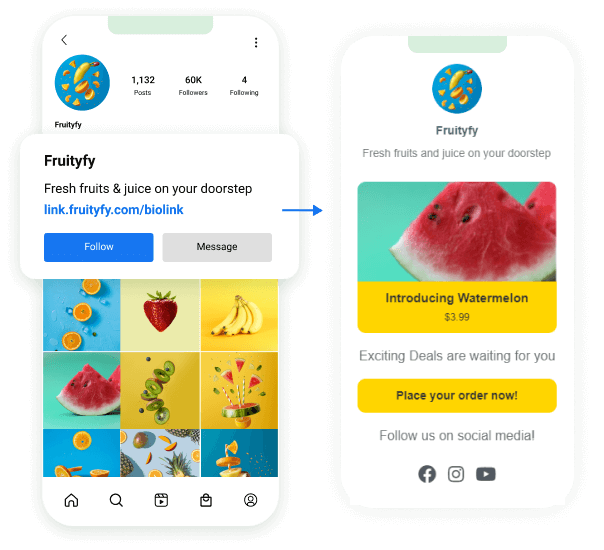
2. Wix
Wix is renowned for its flexibility and extensive template library. With its drag-and-drop editor and robust design features, it caters to various needs, from simple microsites to comprehensive websites. Wix is suitable for users who want both ease of use and creative control.
3. Teachable
Teachable is primarily known for online course creation but is also effective for building educational microsites. It provides tools for designing course landing pages, integrating with payment gateways, and managing user interactions, making it ideal for educational content and membership sites.
4. Podia
Podia offers a comprehensive platform for creating and selling digital products, memberships, and online courses. Its microsite-building capabilities include user-friendly design tools, sales integrations, and a focus on customer engagement, making it suitable for creators and educators.
5. SendOwl
SendOwl specializes in digital product sales and marketing. It allows users to build focused microsites for selling e-books, software, and other digital goods, with features such as payment integration, automated delivery, and promotional tools.
A quick overview of pricing plans
| Tool | Basic plan/ Starter | Pro plan/ Growth | Pro+ plan /Enterprise plan |
| Replug | $19/month | $49/month | $79/month |
| Wix | $17/month | $29/month | $36 – 159/month |
| Teachable | $59/month | $159/month | $249/month |
| Podia | $9/month | $39/month | $89/month |
| SendOwl | $18/month | $37/month | $89/month |
Criteria for choosing the right microsite builder
When selecting a microsite builder, consider the following criteria:
| Ease of use | Look for a platform with an intuitive interface and drag-and-drop functionality to streamline the design process, especially if you lack coding skills. |
| Customization options | Ensure the tool offers a range of templates and design options to align with your brand’s aesthetics and campaign goals. |
| Integration capabilities | Choose a builder that integrates seamlessly with your existing tools, such as email marketing platforms, CRM systems, and analytics services. |
| Performance tracking | Opt for a tool with built-in analytics or integration with third-party analytics platforms to monitor and optimize your microsite’s performance. |
| Cost | Compare pricing plans and features to find a solution that fits your budget while meeting your specific needs for functionality and support. |
Convert your followers into customers with single bio link.
Uplift your conversion rates by connecting all of your social accounts and business pages with a single bio link.
Get Started For Free!
How to create a microsite using Replug
Replug makes it much easier to create microsites. Here’s how to create a microsite using Replug:
Step 1: Sign in or create an account
If you’re already a Replug user, sign in. If not, create a free account to get started.
Step 2: Access “Bio Links”
- Go to the Replug dashboard and find the “Bio Links” feature.
Step 3: Create a new bio link
- Click the “New Bio Link” button to begin creating your microsite.
Step 4: Choose content blocks
- Select the content blocks you need, such as social icons, links, RSS feeds, audio, video, text, and cards. If you choose social icons, proceed to the next step.
Step 5: Configure social icons block
- Choose up to 5 social media platforms. Add titles, customize colors, and paste the links. Click “Add Block” to include them.
Step 6: Add more content blocks
- Repeat the process for additional content blocks. For example, to add website links, select the “Links” block and add titles, URLs, and links.
Step 7: Proceed to the next step
- After adding all desired content blocks, click “Next.”
Step 8: Customize your bio link page
- Personalize your page by adding your brand name, uploading an avatar, and including a title and subtitle.
And now you have your Microsite ready!
For more details, checkout the complete Replug help documents.
Create bio links for Instagram, TikTok, Facebook, Twitter & LinkedIn.
Create fully customizable bio link webpages to drive traffic from and to your social media channels, online store, website and much more.
Learn More!
Business-specific microsites
With the Replug bio link, you can easily set up personalized microsites for different industries and purposes. It’s a great way to create unique landing pages that connect with your audience on a deeper level.
| E-commerce | Amazon business microsite for flash sales Shopify business microsite for product bundles Etsy business microsite for pre-order exclusives |
| Technology | Product launches Beta testing programs Virtual events |
| Marketing & lead generation | Exclusive content & webinar series User-generated content (UGC) campaigns Contest or giveaway promotion |
| Entertainment | Premium content Music album release, Industry events |
| Freelancers | Showcase portfolio Niche expertise Case studies & results |
| Education | Online course launch Open house event |
| Healthcare | New treatment option Wellness challenge |
Why choose Replug bio link instead of other smart link tools?
What sets Replug apart is its comprehensive link management capabilities, perfectly suited for agencies, brands, and marketers.
Create stunning bio-landing pages in minutes with our intuitive drag-and-drop editor. Customize every element to match your brand identity – from colors and fonts to captivating animations. Want to showcase your latest blog posts? Our RSS feed integration has you covered. Need to drive traffic to specific pages? Add compelling call-to-action, and with our live preview, you can see your masterpiece come to life before hitting publish.
But it doesn’t stop there. Replug offers advanced analytics to track your audience’s behavior, helping you make data-driven decisions. Plus, our mobile-optimized designs ensure your bio link looks flawless on any device.
Finally, Replug offers affordable pricing plans that provide great value for the extensive features and capabilities it offers.
Conclusion
Overall, microsites can be a game-changer for targeted marketing, offering a focused platform to engage audiences and drive specific actions. Their ability to provide a tailored experience, combined with cost-effective development and flexible content options, makes them a valuable tool for achieving your marketing objectives.
FAQs related to microsite
Can I build a microsite myself, or do I need a developer?
There are user-friendly microsite-building tools available that don’t require coding knowledge. These platforms offer pre-built templates and drag-and-drop functionalities, making it easy for anyone to create a basic microsite.
How much does it cost to build a microsite?
The cost of building a microsite varies depending on its complexity and the platform you choose. Microsite builders often have free plans with limited features, while paid plans offer more functionalities and customization options.
Is it possible to update a microsite after it’s launched?
Absolutely. One of the advantages of microsites is their flexibility. You can easily make updates and changes to the content, design, and functionality to keep the site relevant and engaging throughout your campaign.
How can I measure the success of my microsite?
There are various metrics you can track to measure your microsite’s success. Common ones include website traffic, user engagement (time spent on the site), conversion rates (e.g., email sign-ups or purchases made), and social media shares.
What differentiates a microsite from a traditional website?
A microsite is a smaller, focused website dedicated to a specific campaign, product, or event, typically with its own unique URL. Unlike traditional websites that cover a broad range of topics, microsites provide in-depth content on a single subject.



























